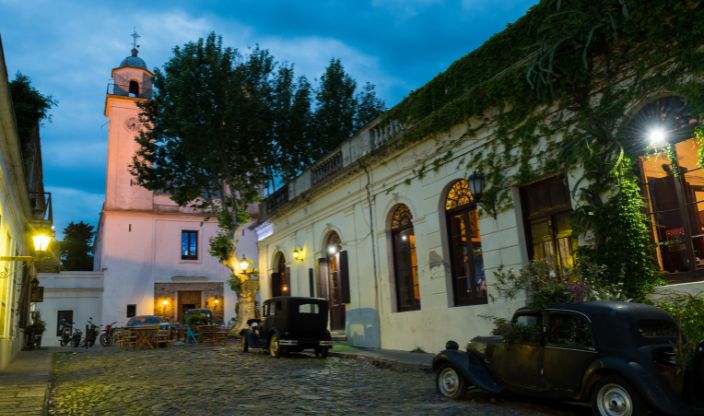Introducing Uruguay
Even though Uruguay is a relatively small nation, it can provide a wide variety of cultural and personal experiences. Beyond the stunning sandy beaches and upscale resorts that are popular in the summer, there are seaside nature preserves and marshes that are charming and quintessentially South American. The country’s cultural centre is located in its capital, Montevideo, but one of the most charming colonial villages is the ancient Colonia. The interior of this quaint village is made up of cattle farms, grasslands, and vineyards that produce top-notch regional wines.
Uruguay, the second-smallest nation in South America, is situated on the Atlantic Ocean and is surrounded by Brazil and Argentina. Most of the nation is made up of land only a few hundred feet above sea level, as well as lush forests. Mount Cathedral, at 1,685 feet, is the highest point in Uruguay (514 meters).
The months of November through to February, which are considered Uruguay’s summer, are the ideal times to travel to this wonderful destination. The temperature ranges from 72°F and 84°F, which is comfortable. During this time, it is also ideal to visit the amazing beach resorts.
Uruguayan cuisine has been influenced by immigrants from France, Spain, Portugal and Italy. This can be seen in the country’s agricultural products, such as grass-fed beef, dairy, vegetables, and fruits like quince, apples, peaches, melons, and tangerines.
Some of their staple foods include:
Asado: melt in your mouth BBQed beef cooked on eucalyptus wood embers
Gnocchi: this potato dumpling is referred to as “tuco” thanks to the sauce it is served with, which is tomato and beef, resembling a Bolognese. It can also be enjoyed with four-cheese sauce, pesto, or Pomodoro sauce.
Choripan: A wonderful hot dog made with chorizo, with two thirds beef and one third pork, which is smoked and cooked slowly on wood embers.
Uruguayans Pamplona: this delightful dish is made from cutlets of beef, chicken, or pork filled with cooked ham, bacon, mozzarella cheese, red peppers, and olives. The Pamplona is then rolled and cooked on the barbecue or baked in the oven. Serve with a refreshing salad or pasta.
Most Uruguayans, like their neighbours in Argentina, are descended from immigrants who came to the nation in the 19th and 20th centuries from Spain and Italy. Roman Catholicism predominates, although Montevideo, the country’s capital, is home to one of South America’s smallest but largest Jewish communities.
While the country was founded by Europeans in 1516, the Portuguese inhabited it in 1680. The Spanish established Montevideo and seized power in 1726.
Later, Uruguayans would fight against Argentine and Brazilian colonisation. A treaty in 1828 established Uruguay as a separate country, with its first constitution adopted in 1830.
Some amazing spots to enjoy with your family include:
Lecocq Zoo is another location that merits a visit. This zoo, which is around 10 kilometres from the city, is 120 hectares in size. Over 500 animals from 33 different species reside there in delightful surroundings close to their native habitat. Visitors to this zoo can view a wide variety of animals there, including llamas, zebras, capybaras, foxes, deer, monkeys, armadillos, ostriches, coatis, and otters.
Blu Park in Montevideo is a well-known amusement park, which leads guests to a huge square adorned with rocks and waterfalls. The square offers a wide variety of entertainment. There is a racing track, a dancing attraction with upbeat Hispanic sounds, and a Dinopark for young children to enjoy.
Aquamania:
in Salto enjoy several waterfalls, a jacuzzi, pools with artificial waves, as well as entertainment activities and relaxing treatments with all the family.
Recommended Uruguay Specialists
Top Locations in Uruguay





